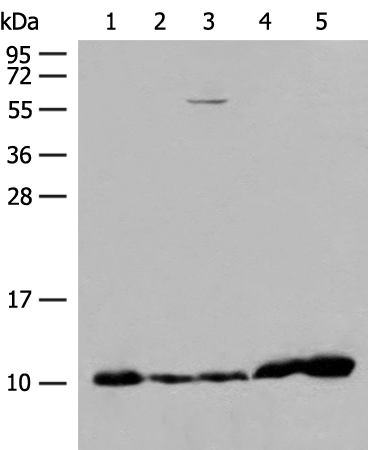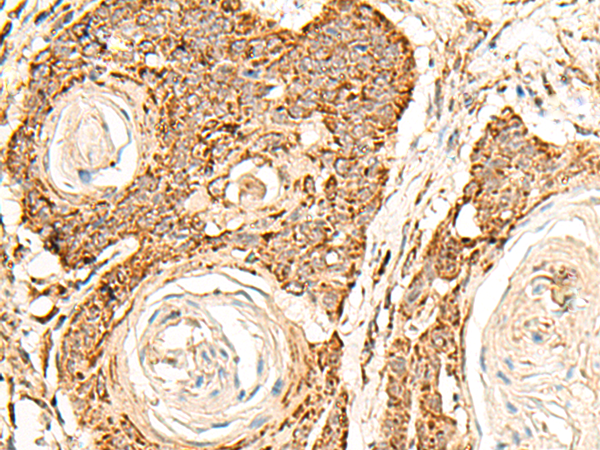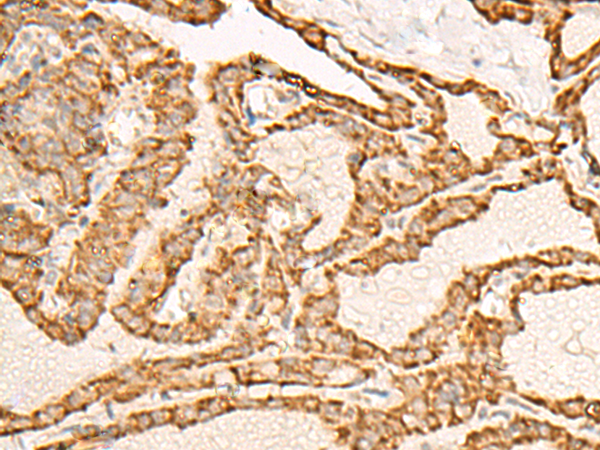ATP5I Polyclonal Antibody
For reference only. Please follow the manual included in your kit for instructions.
Catalog Number
RD219935A
Product Name
ATP5I Polyclonal Antibody
Catalog Number
RD219935A
Clonality
Polyclonal
Purification Method
Antigen affinity purification
Isotype
IgG
Host
Rabbit
Background
Mitochondrial ATP synthase catalyzes ATP synthesis, utilizing an electrochemical gradient of protons across the inner membrane during oxidative phosphorylation. It is composed of two linked multi-subunit complexes: the soluble catalytic core, F1, and the membrane-spanning component, Fo, which comprises the proton channel. The F1 complex consists of 5 different subunits (alpha, beta, gamma, delta, and epsilon) assembled in a ratio of 3 alpha, 3 beta, and a single representative of the other 3. The Fo seems to have nine subunits (a, b, c, d, e, f, g, F6 and 8). This gene encodes the e subunit of the Fo complex. Alternative splicing results in multiple transcript variants.ATP5I (ATP Synthase, H+ Transporting, Mitochondrial Fo Complex Subunit E) is a Protein Coding gene. Among its related pathways are Respiratory electron transport, ATP synthesis by chemiosmotic coupling, and heat production by uncoupling proteins. and purine nucleotides de novo biosynthesis. GO annotations related to this gene include ATPase activity and hydrogen ion transmembrane transporter activity.
Immunogen Information
Immunogen
Synthetic peptide of human ATP5I
Swissprot
P56385
Synonyms
ATP 5IATP 5KATP synthase e chain mitochondrialATP synthase H+ transporting mitochondrial F0 complex subunit EATP synthase subunit eATP synthase subunit e mitochondrialATP5IATP5IATP5KATPase subunit eF1F0 ATP synthase murine e subunitMGC12532mit
Calculated MW
8 kDa
Observed MW
Refer to figures
Gene Accession
NP009031
Applications
Reactivity
Human, Mouse, Rat
Tested Applications
WB,IHC,ELISA
Conjugation
Unconjugated
Dilution
WB 1:500-1:2000, IHC 1:30-1:150, ELISA 1:5000-1:10000
Concentration
0.78 mg/mL
Storage Buffer
PBS with 0.05% NaN3 and 40% Glycerol, pH7.4
Storage Instructions
Store at -20°C. Avoid freeze / thaw cycles.


